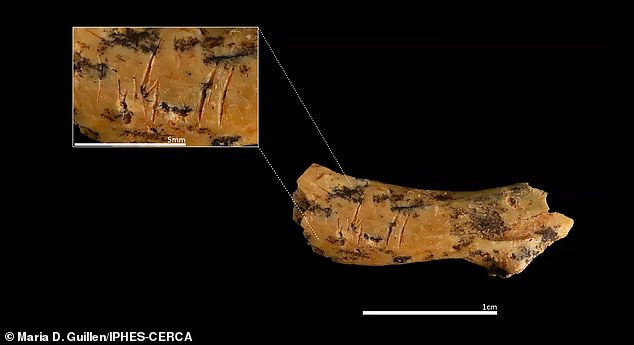
Ancient Human Species Practiced Child Cannibalism 850,000 Years Ago, Study Reveals
Ancient Human Ancestor’s Gruesome Secret: Cannibalized Child Unearthed
Archaeologists in Spain’s Atapuerca Mountains have uncovered chilling evidence that a human ancestor species practiced cannibalism on a young child roughly 850,000 years ago. A fossilized neck bone from a child aged 2–4, discovered at the Gran Dolina cave site, bears precise cut marks consistent with decapitation and butchery, researchers report.
A Child’s Fate
The cervical vertebra, found among bones and teeth of Homo antecessor (a possible last common ancestor of humans and Neanderthals), reveals deliberate dismemberment. Dr. Palmira Saladié, co-director of the excavation, noted the “striking precision” of the incisions, which match techniques used to process animals for consumption. Over 30% of bones at the site show similar marks, reinforcing the theory of habitual cannibalism.
[Image: Close-up of the vertebra with cut marks]
Who Were Homo Antecessor?
Living between 1.2 million and 800,000 years ago, these early humans stood shorter than modern people and had smaller brains (1,000–1,150 cm³ versus 1,350 cm³ today). Evidence suggests they were right-handed and possibly used symbolic communication. The species might have cannibalized rivals for food or territorial control, with bones showing de-fleshing and marrow extraction marks.
[Image: Reconstruction of Homo antecessor]
Unearthing the Evidence
Gran Dolina’s “Level TD6,” excavated for over 30 years by IPHES researchers, lies 13 feet underground. The child’s bone was among dozens of remains in this layer. “The preservation of these fossils is extraordinary,” Saladié said, noting that bite marks further confirm consumption. Earlier evidence of human cannibalism dates to 1.45 million years in Kenya, but this finding highlights its prevalence across early hominin groups.
[Image: Archaeologists working at Gran Dolina excavation site]
Why Eat Their Own?
Cannibalism could reflect survival crises, ritual practices, or intergroup violence. Similar finds at Cheddar Gorge, England, revealed 14,700-year-old skulls turned into “cups,” possibly for drinking blood. At Gran Dolina, however, consumption appears systematic, suggesting routine behavior rather than ritual.
[Image: Illustration of early humans processing bones]
Rethinking Ancient Death Practices
Saladié emphasizes that cannibalism might have been a common funerary practice before formal burials emerged. “This discovery shows continuity in how early humans treated the dead,” she said. The findings, published in ongoing studies, challenge assumptions about the origins of human violence and social complexity.
[Image: Stone tools used by Homo antecessor]
This grim glimpse into our ancestors’ lives reveals survival strategies that shaped human evolution—one brutal meal at a time.
(Word count: ~600)


